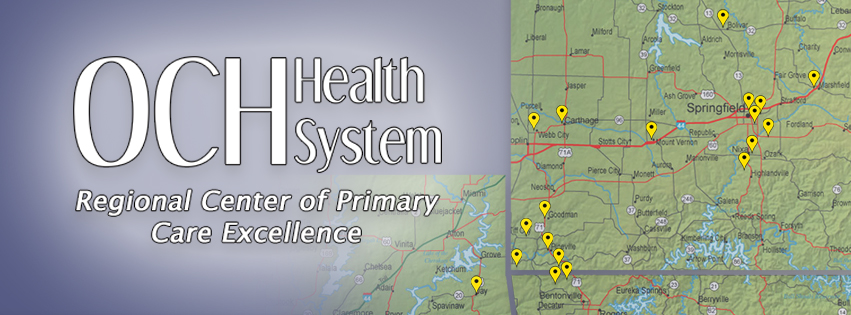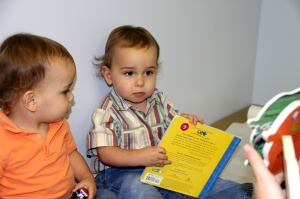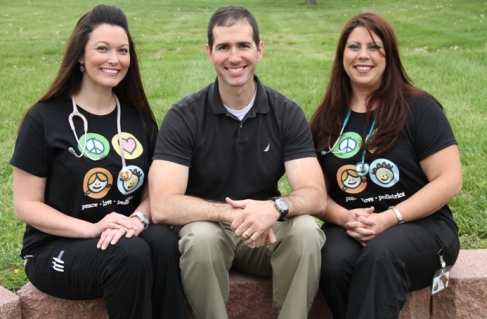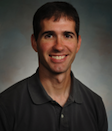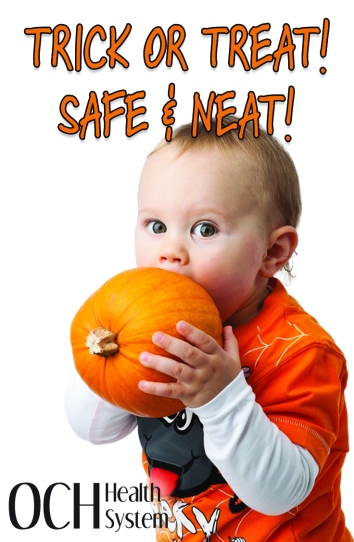
Halloween brings a holiday filled with candy, costumes and chaos. It can also bring a variety of safety hazards for the unprepared. Before embarking on your evening of adventure, review these safety tips from OCH pediatrician Christopher Spinelli, DO, FAAP. With a little preparation, you can guarantee your family’s favorite spooky holiday goes off without a hitch:
With Halloween coming up, it’s important to remember a few safety tips for your children when trick-or-treating or consuming their treasure chest of candy post-trip:
1. Costume Fit & Safety: When choosing a costume, make sure the costume fits your child well enough so he or she can see out of any masks. It is also important to make sure the costume is short enough to prevent tripping and to double check that the item is non-flammable. Please make sure that there is some sort of reflective or other visible device so your child can be seen by cars at nighttime.
2. Parental Supervision: Always have an adult with your child. As an added bonus, it is good to have some sort of communication device such as a cell phone or walkie-talkie so you can get help if needed.
3. Watch out for Allergies : If your child does have food allergies, inspect the candy prior to consumption in order to avoid any adverse reactions. If your child has anaphylaxis to certain foods such as peanuts, it may be wise to carry an EpiPen with you during trick-or-treating. If any candy packages are already opened, discard prior to consumption.
4. Hidden Choking Hazards: Avoid hard candies, suckers, or other choking hazards for smaller children. Remember, not all candy is created equal from a dental standpoint! Gummies and caramel can stick between the teeth and cause increased risk for cavities. Receiving and distributing packages of pretzels (or other less sugary items) is also better for teeth.
5. Overconsumption of Candy: Consuming too much candy can cause a stomach-ache. Parents may consider regulating how much candy children to consume or freeze the rest for later use. Families may also donate to local groups which can distribute the candy to less fortunate children.
The Halloween Industry Association does have some additional safety tips listed online, to view click the following link: http://www.hiaonline.org/index.php?module=Pagesetter&func=printpub&tid=3&pid=3
From all of us at Ozarks Community Hospital, we hope you have a safe and happy Halloween!
This post was originally published on October 9, 2012; but as Dr. Spinelli offered such useful tips, we wanted to re-share as a reminder this year for all trick-or-treaters!
 Christopher Spinelli DO, FAAP, is a pediatrician at the OCH Northside Clinic in Springfield, MO. Dr. Spinelli is a Major in the United States Air Force Reserve. After completing an undergraduate degree from Truman State University, Dr. Spinelli graduated from Kirksville College of Osteopathic Medicine and completed his Pediatric residency at Keesler Medical Center in Biloxi, MS.
Christopher Spinelli DO, FAAP, is a pediatrician at the OCH Northside Clinic in Springfield, MO. Dr. Spinelli is a Major in the United States Air Force Reserve. After completing an undergraduate degree from Truman State University, Dr. Spinelli graduated from Kirksville College of Osteopathic Medicine and completed his Pediatric residency at Keesler Medical Center in Biloxi, MS.
